FISCHERTECHNIK: chemotronics, ionistors, electrochemical supercapacitors inside the children's designer for programmers
As a child, I did not part with the designers. I had 2 types of them: an analogue of LEGO (plastic and with pimples) and metal with bolts. After a post on Habré , I understood how poor the choice was at that time. A couple of weeks ago, hackspace members Kostya Kostyuk told me that in Moscow there are people who are involved in promoting and training FISCHERTECHNIK .
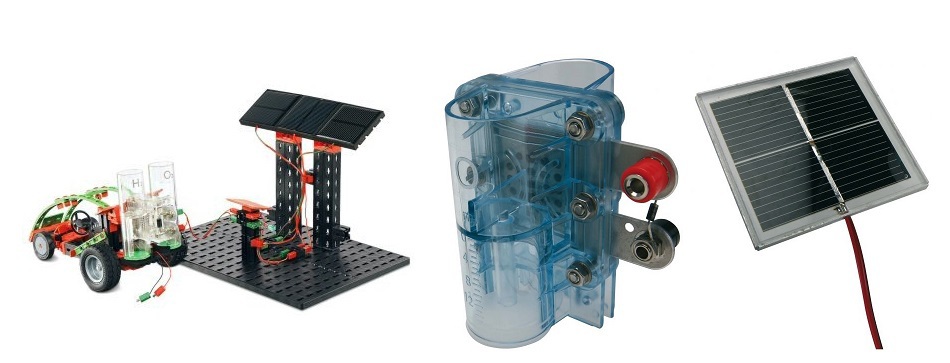
(pictured: Electric car with a gas station and a hydrogen fuel cell, solar battery)
In Germany, a community has developed around this designer, they are proud of their inventor and set their own records.
What I liked about this designer is itshardcore scientific and technical seriousness and references to many real mechanisms / devices (from a printer, a CD-drive and Leonardo da Vinci mechanisms, to step excavators, robots and electric vehicles). The kits also include a controller with a graphical programming environment, which allows children to learn the basics of algorithms and programming.
Under the cut, a little about a car on a hydrogen fuel cell (from the Ecological
Power Engineering + Fuel Element constructor), about the inventor of the constructor and a short overview of the existing construction kits in Moscow (you can only envy those geeks who are now 8+ years old, because new year they are waiting for such gifts).

(Caution! Under katom pain for aimlessly lived years)
A fuel cell (electrochemical generator) is a device that converts the chemical energy of fuel (hydrogen) into electrical energy during an electrochemical reaction directly, in contrast to traditional technologies that use the combustion of solid, liquid and gaseous fuels. Direct electrochemical conversion of fuel is very effective and attractive from an environmental point of view, since a minimal amount of pollutants is released during operation, and there are no strong noises and vibrations.
The efficiency of existing fuel cells is 60-80% , which is due to the direct conversion of fuel energy into electricity (bypassing combustion).
While searching for information, I learned a lot of new words
en.wikipedia.org/wiki/Ionistor
ru.wikipedia.org/wiki/Electrochemical_supercapacitors
ru.wikipedia.org/wiki/Chemotronic
Video demonstrating the operation of a hydrogen fuel cell on a table (1.2 V; 440 mA)
Proton membrane, electrolysis of water, solar battery and all this in one set of children's designer. I don’t know what will surprise me the next time, unless there’s just an atomic battery in a child’s designer or graphene spare parts for a pocket children’s 3D printer with magnetism memristors.
Fischer artur - inventor of flash and a plastic dowels (first anchor consisted of hemp twine and glue from animal blood, I used a wooden Chopyk)
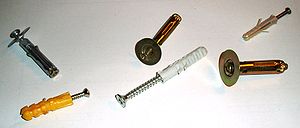
Arutr Fisher - Owner 1080 patents, just behind the Edison whoovercame patented the invention in 1093
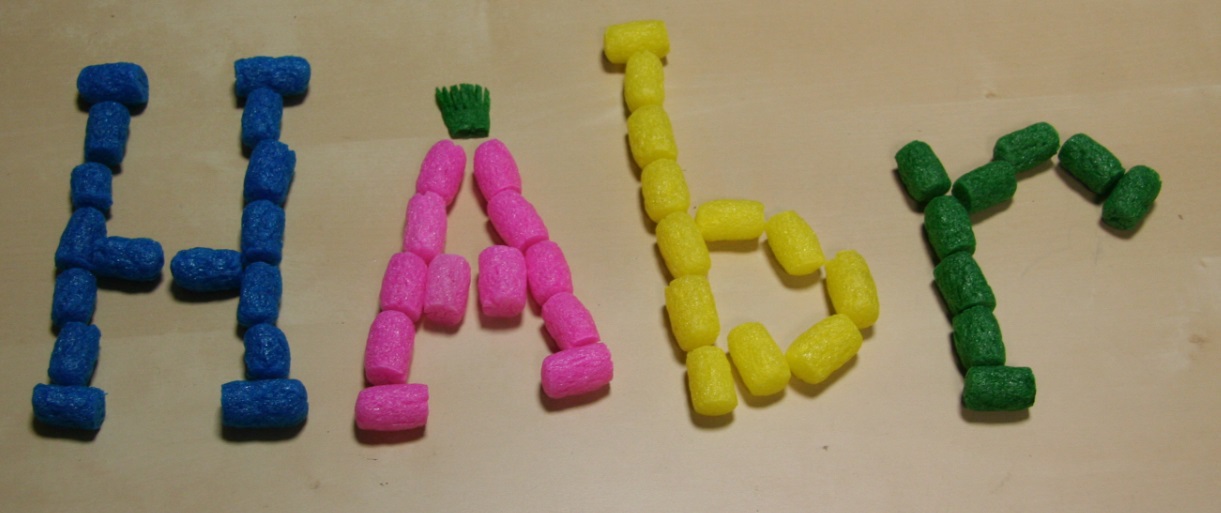
A little later, Arthur invented the dowels for the treatment of bone fractures, as well as a children's biodegradable designer from potato starch .
Most likely, FISCHERTECHNIK designers were the first on the market to include electronic modules for computer-based model management. The first such kit, called COMPUTING EXPERIMENTAL, went on sale in 1983 and involved connecting toy robots to Atari, Commodore, and BBCmicro computers.
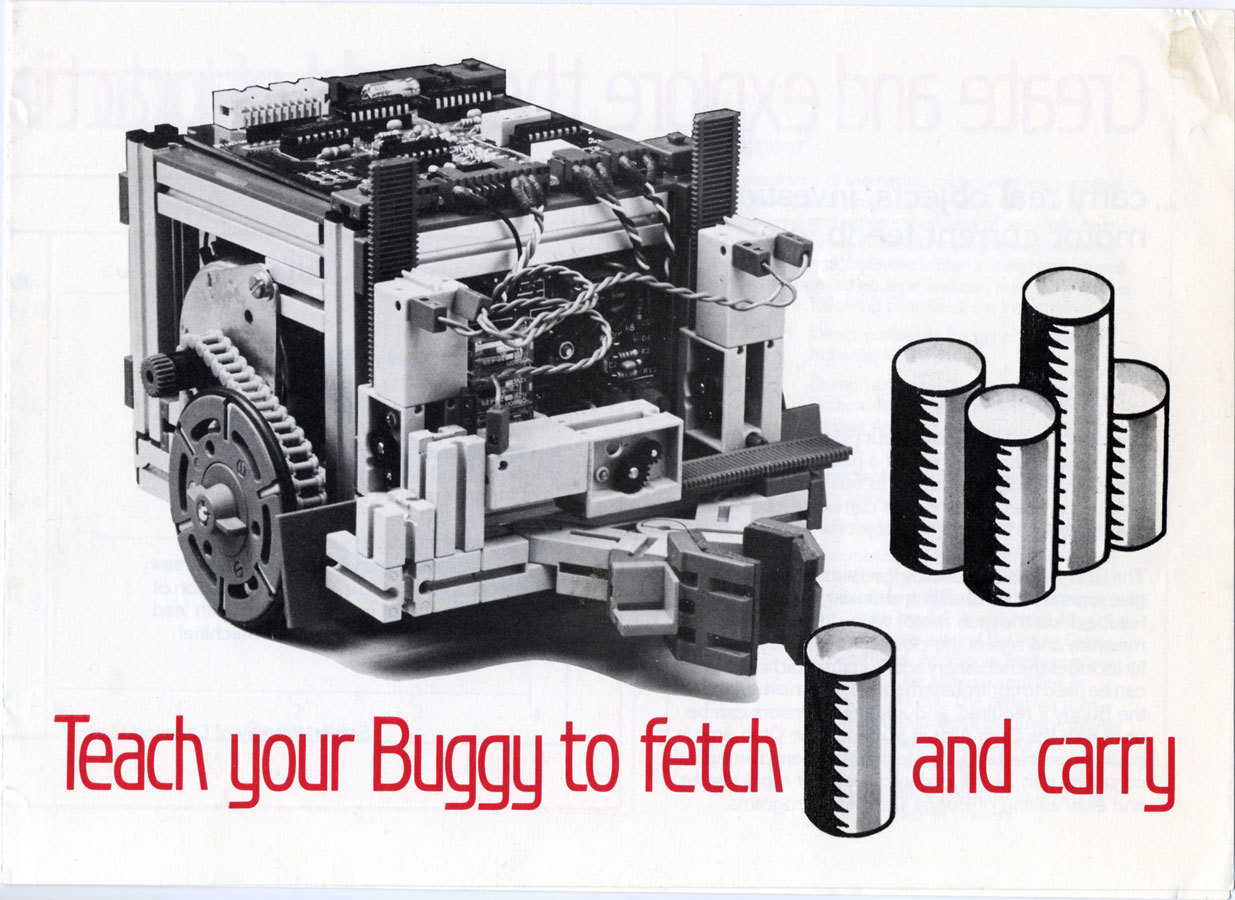
Robot-turtle from the COMPUTING EXPERIMENTAL set of 1983.
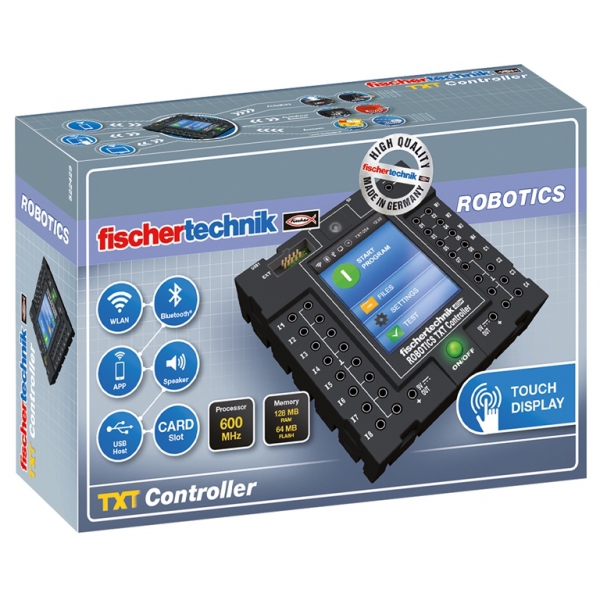
Currently, the FISCHERTECHNIK Robotics designers have a toy programmable controller ROBOTICS TXT with completely adult characteristics:
The controller is used to control the models of mechanisms, machines and robots that you assemble from the designer. In order for your system to come to life, you need to develop a control program and load it into the controller. You can use the ROBO Pro programming language for this.
In ROBO Pro, programs are compiled in the form of classic flowcharts, which are a graphical display (or diagram) showing the sequence of basic steps of the algorithm.
Adult uncles use flowcharts to plan program development and properly organize its steps. Here's what the flowchart for controlling a traffic light looks like:

Flowchart in ROBO Pro
Each figure in this flowchart displays a separate stage of actions: ovals with green and red men correspond to the beginning and end of the chain of actions. The arrows show the sequence of actions.
Usually, after the flowchart is developed, we actually have a plan for compiling a program in an algorithmic programming language. In addition, each block turns into one or more of its operators. In ROBO Pro, the process of converting a circuit into a program code occurs automatically after clicking on the "Run program" button. Thus, we can debug the algorithm on real hardware without manually coding the program.
Drawing up flowcharts is very useful at first when studying programming, as it allows you to develop the habit of drawing up a logical and, moreover, a complete plan of the program being created.
The figures used in ROBO Pro to represent program elements to some extent repeat the elements listed in GOST 19.701-90 .
The advantage over LEGO is that LEGO has its own “closed” programming language, which is used only in lego. At FISCHERTECHNIK, the language is based on the same principles as the "adult" programming languages. Children get acquainted with the generally accepted form of recording algorithms and block diagrams.
Wi-Fi Control:
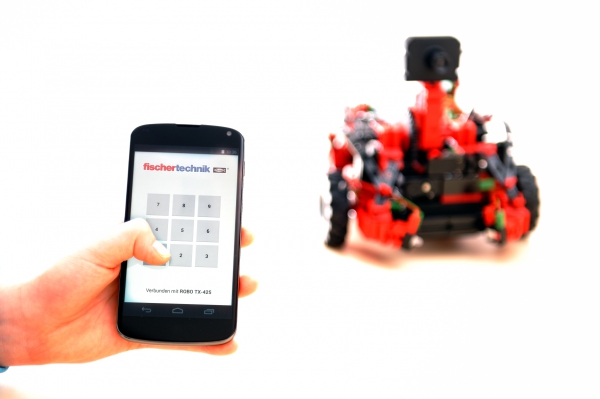
ROBOTICS TXT Discoverer Set / Learning Lab. Workbook in Russian PDF
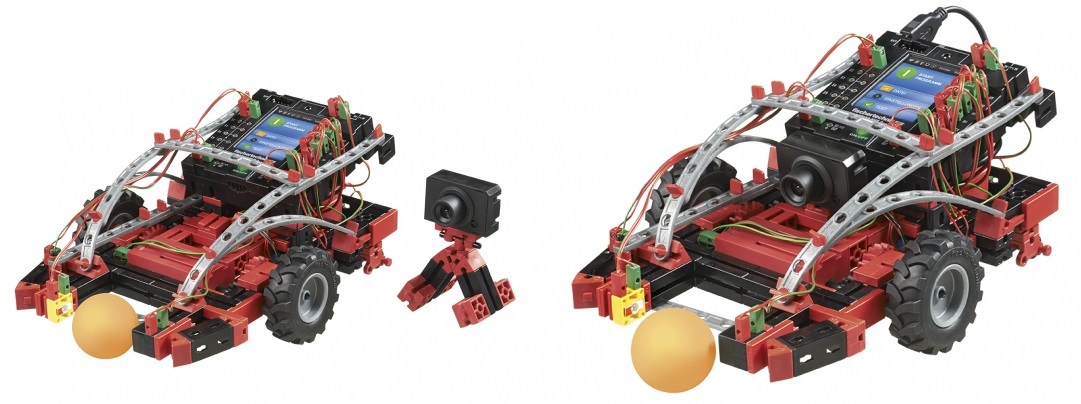
Robot-footballer
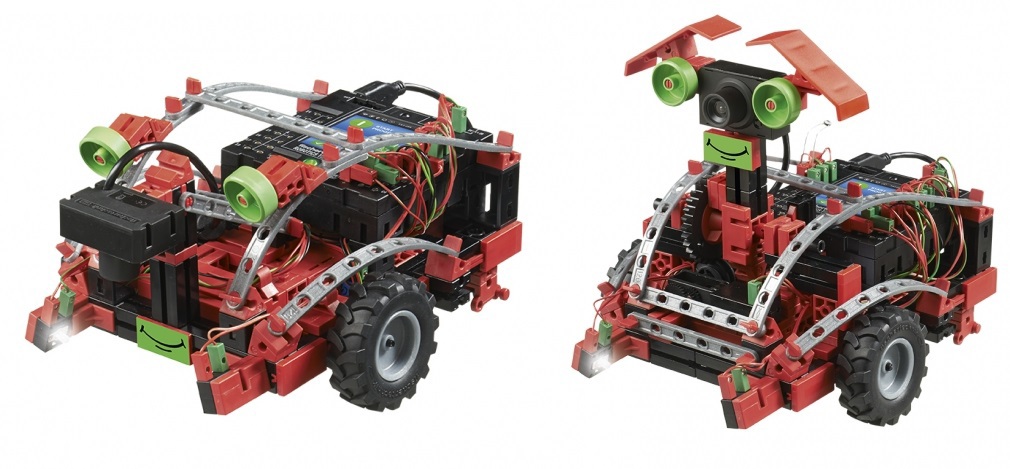
Robot reconnaissance and tracker robot
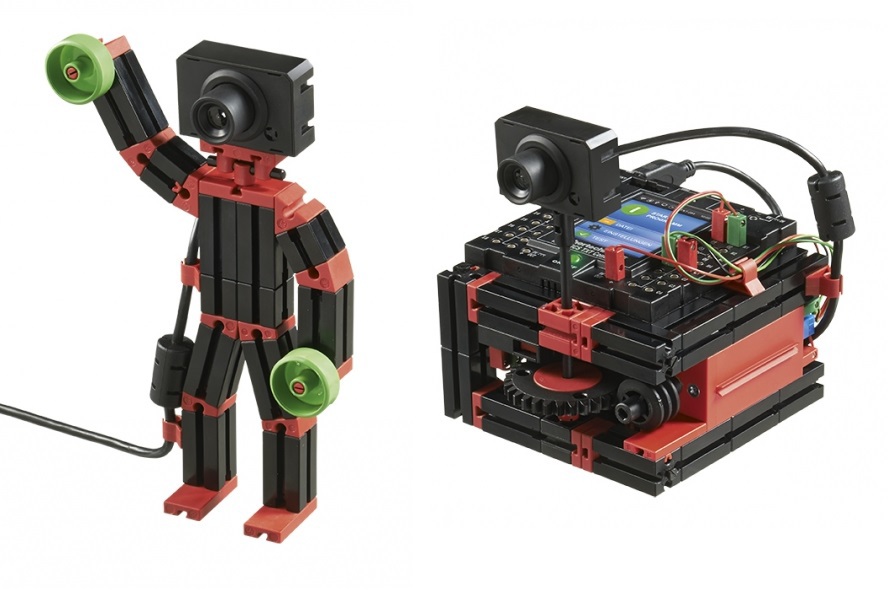
PTZ camera and video
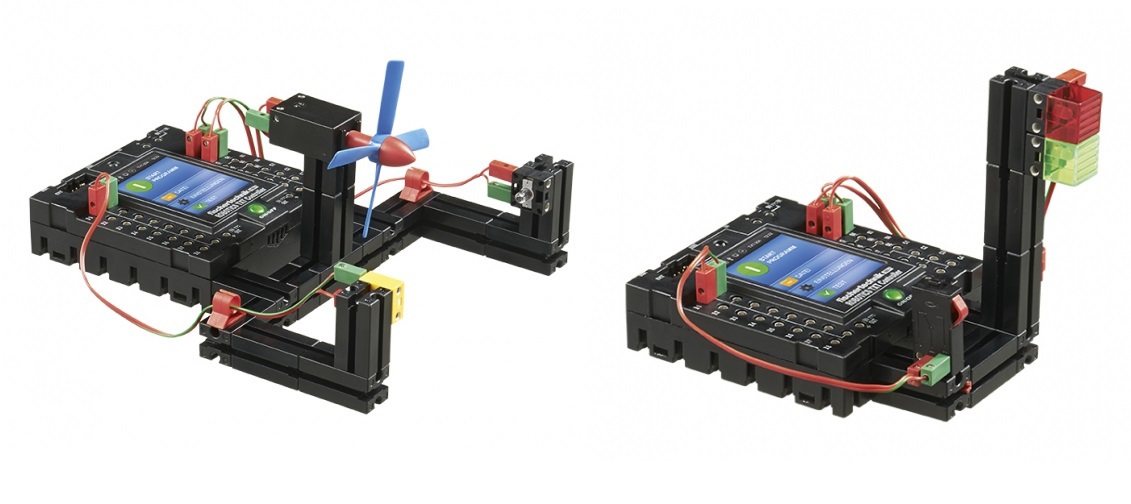
operator Hand dryer with line crossing sensor and traffic light

ROBO TX Researcher: tunnel robot, flower detector, ranger, lifeguard, etc.
Workbook in Russian PDF

ROBO TX ElectroPneumatics: pinball, color sorter robot, track for a ball with a gripper and a vacuum manipulator
Workbook in Russian PDF

Realistic fully functional industrial robots: a robot for a warehouse, a three-axis manipulator and a robot with a gripper
Theory from a workbook :
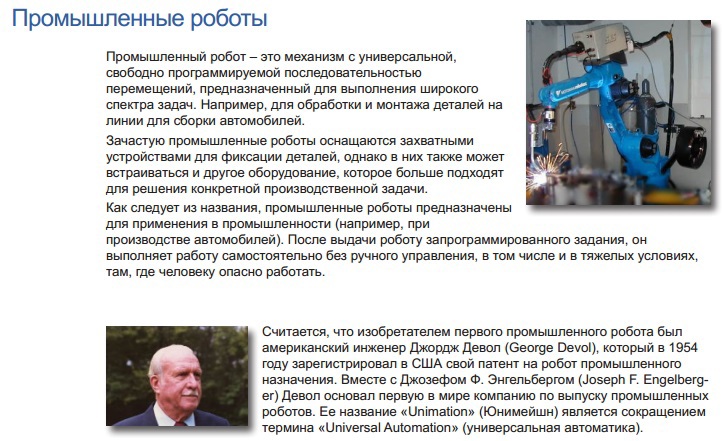
Workbook in Russian PDF
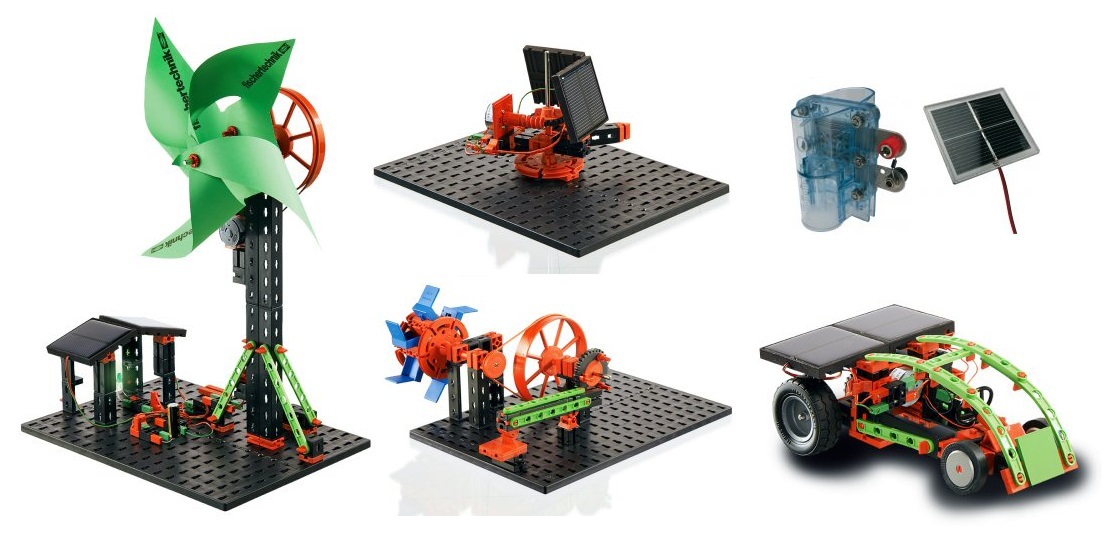
Ecological energy: wind power installation, tracking the sun, electric car, hydrogen fuel cell
Theory from a workbook:
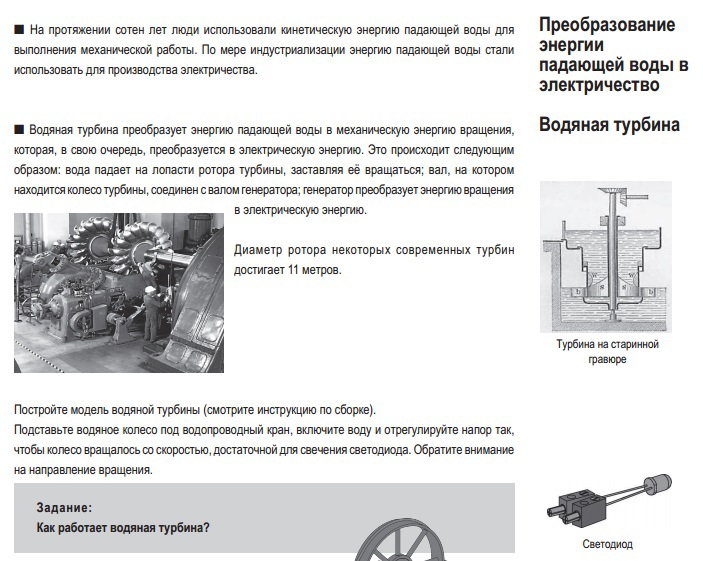
Workbook in Russian PDF
11 interesting models that repeat various outstanding inventions of the 17-19th centuries.
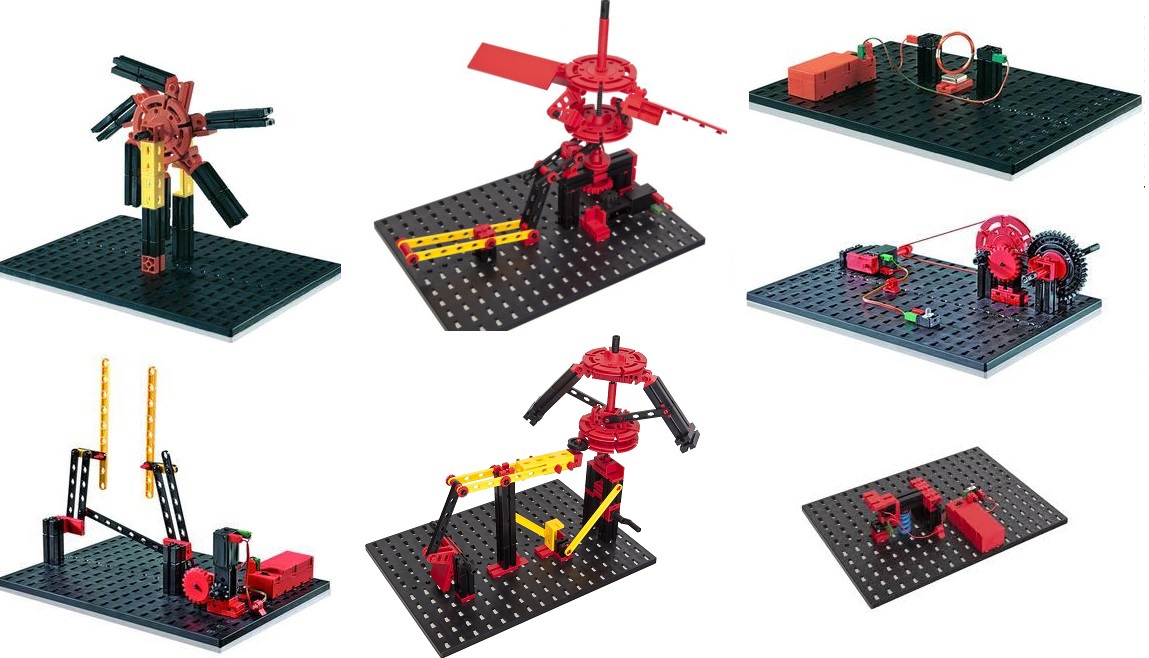
Technical revolutions: the “perpetual motion machine”, a helicopter, an electric motor and an electric generator, a wiper for a car (used to be wiped with hands), a centrifugal regulator (the first cybernetic device), a Morse telegraph, etc.
An example of a description from a workbook:
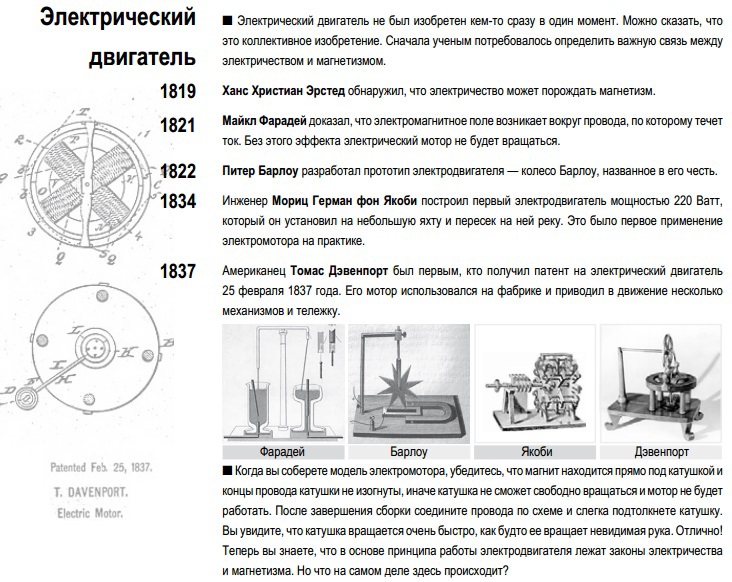
Workbook in Russian PDF
From the designer you can assemble the mechanisms that Leonardo da Vinci invented: blacksmith pliers, catapult, mechanical drum, grab, ratchet mechanism, wings, a sliding bridge, and a file cutting machine: A
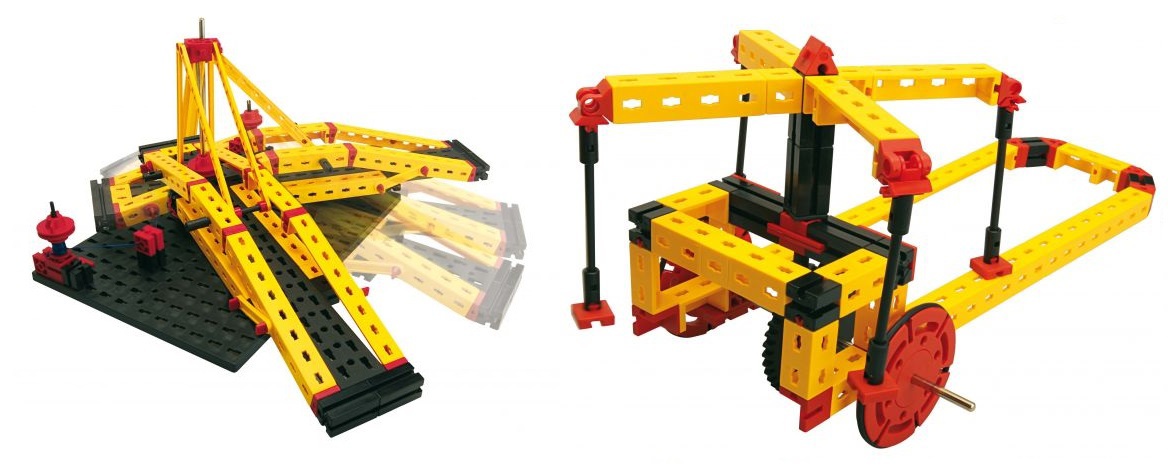
sliding bridge and a war chariot
Theory from a workbook:
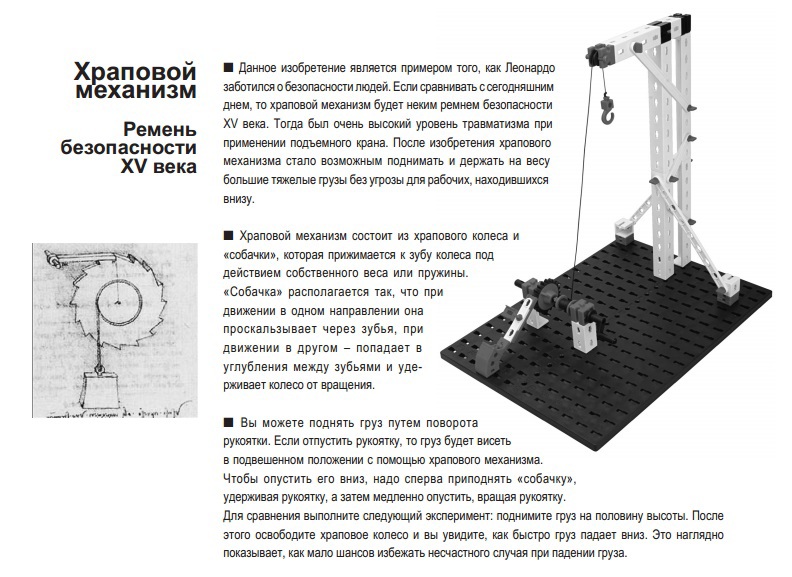
Workbook in Russian Pdf
With this kit, you can study physical phenomena such as inertia, acceleration, energy conservation, momentum, and other topics.
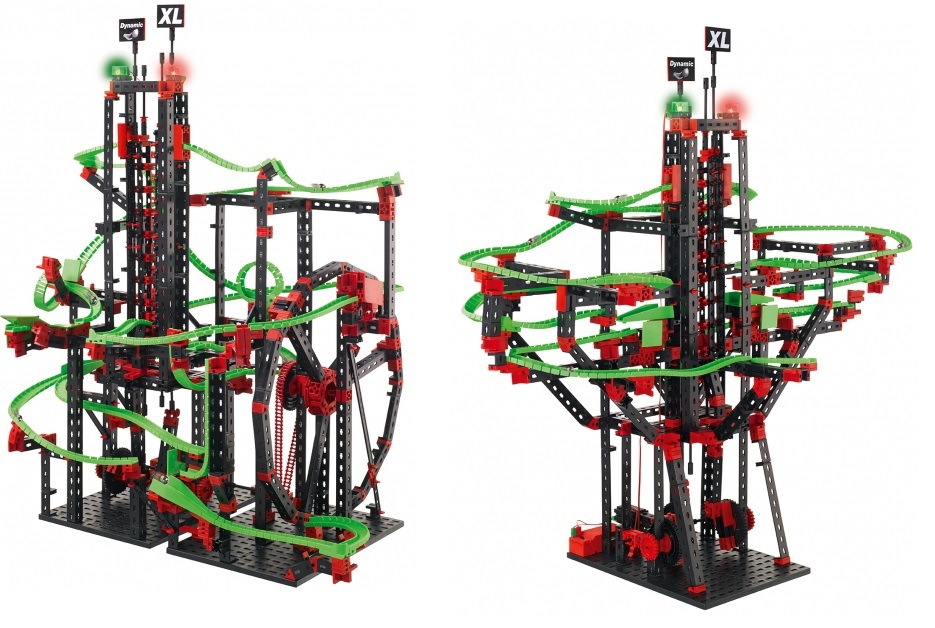
Theory from a workbook:
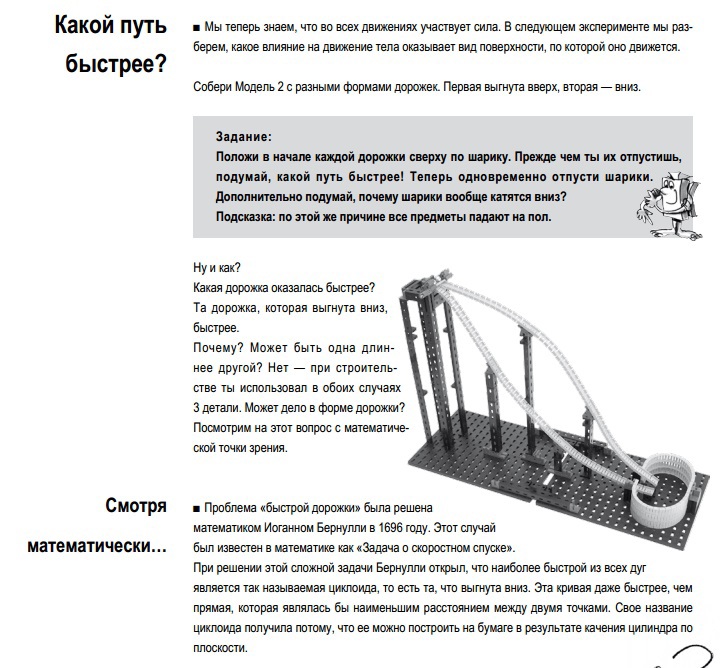
Workbook in Russian PDF
Set for experiments with electronic and automatic devices. With this designer, engineers will be able to get acquainted with the basics of electronics and learn: simple electrical circuits, parallel and series connection of elements, circuits with transistors, capacitors, resistors and LEDs.

Carousel with touch switch and sliding door
Theory from a workbook
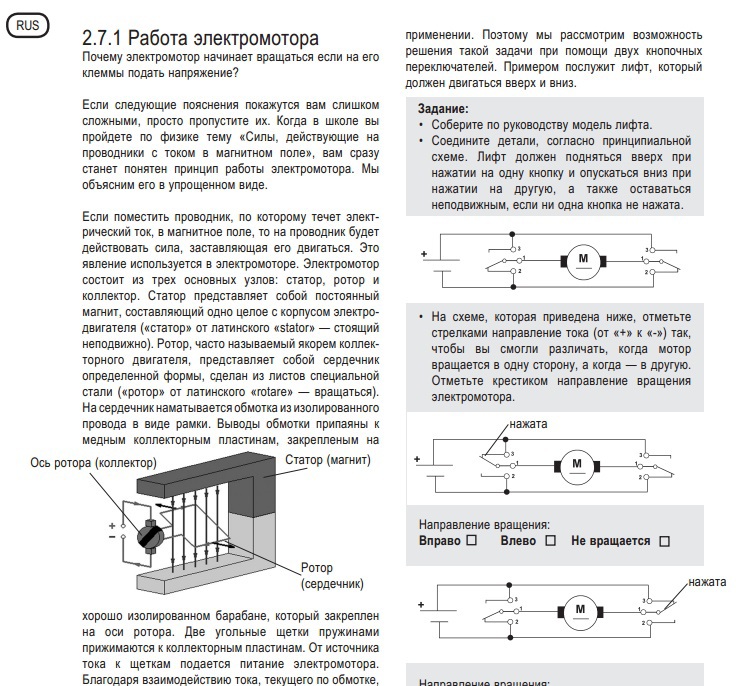
Workbook in Russian PDF

If you have a growing geek who can independently or with your help deal with the designer - take the boxed option. There are many manuals and videos in Russian. In the next publication, I will share where and how training courses for younglings are held in Moscow, as well as recommendations on how to organize a circle yourself.
PS

(pictured: Electric car with a gas station and a hydrogen fuel cell, solar battery)
In Germany, a community has developed around this designer, they are proud of their inventor and set their own records.
Video
What I liked about this designer is its
Under the cut, a little about a car on a hydrogen fuel cell (from the Ecological
Power Engineering + Fuel Element constructor), about the inventor of the constructor and a short overview of the existing construction kits in Moscow (you can only envy those geeks who are now 8+ years old, because new year they are waiting for such gifts).

(Caution! Under katom pain for aimlessly lived years)
Hydrogen fuel cell
A fuel cell (electrochemical generator) is a device that converts the chemical energy of fuel (hydrogen) into electrical energy during an electrochemical reaction directly, in contrast to traditional technologies that use the combustion of solid, liquid and gaseous fuels. Direct electrochemical conversion of fuel is very effective and attractive from an environmental point of view, since a minimal amount of pollutants is released during operation, and there are no strong noises and vibrations.
The efficiency of existing fuel cells is 60-80% , which is due to the direct conversion of fuel energy into electricity (bypassing combustion).
While searching for information, I learned a lot of new words
en.wikipedia.org/wiki/Ionistor
ru.wikipedia.org/wiki/Electrochemical_supercapacitors
ru.wikipedia.org/wiki/Chemotronic
General Information About Fuel Cells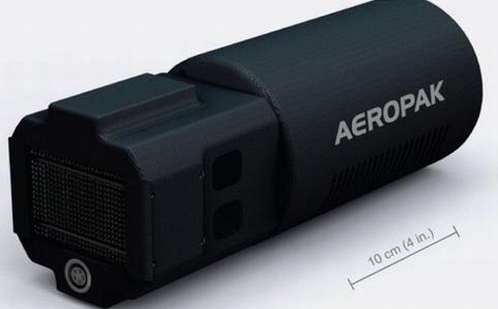
small-sized hydrogen fuel cell for electric drones,
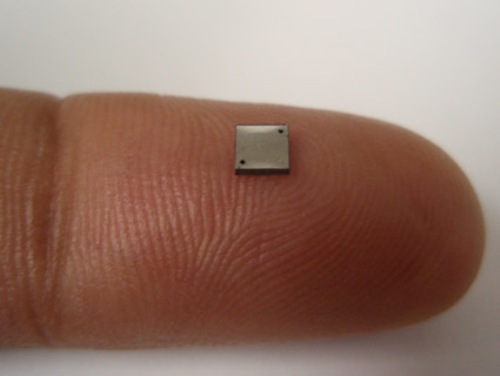
the smallest fuel cell in the world, fuel cell
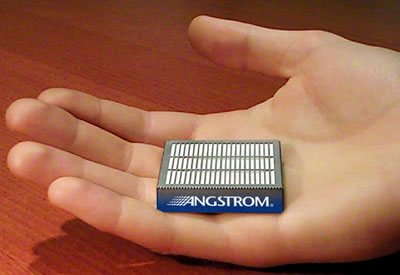
for a mobile phone
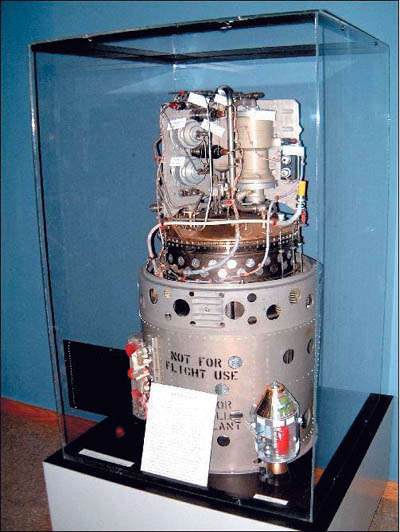
fuel cells were used in the Soviet lunar program, were installed on Apollo, on Buran, even in 1982 a bus was launched.

small-sized hydrogen fuel cell for electric drones,

the smallest fuel cell in the world, fuel cell

for a mobile phone

fuel cells were used in the Soviet lunar program, were installed on Apollo, on Buran, even in 1982 a bus was launched.
Video demonstrating the operation of a hydrogen fuel cell on a table (1.2 V; 440 mA)
Proton membrane, electrolysis of water, solar battery and all this in one set of children's designer. I don’t know what will surprise me the next time, unless there’s just an atomic battery in a child’s designer or graphene spare parts for a pocket children’s 3D printer with magnetism memristors.
Inventor
Fischer artur - inventor of flash and a plastic dowels (first anchor consisted of hemp twine and glue from animal blood, I used a wooden Chopyk)

Arutr Fisher - Owner 1080 patents, just behind the Edison who
more photos of Arthur Fisher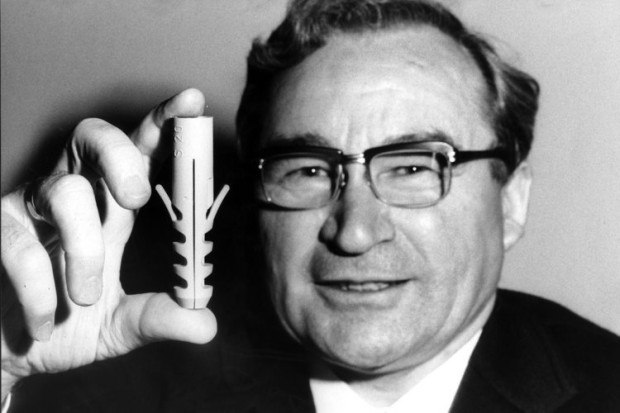
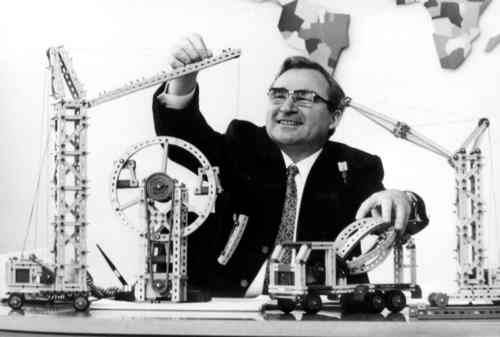
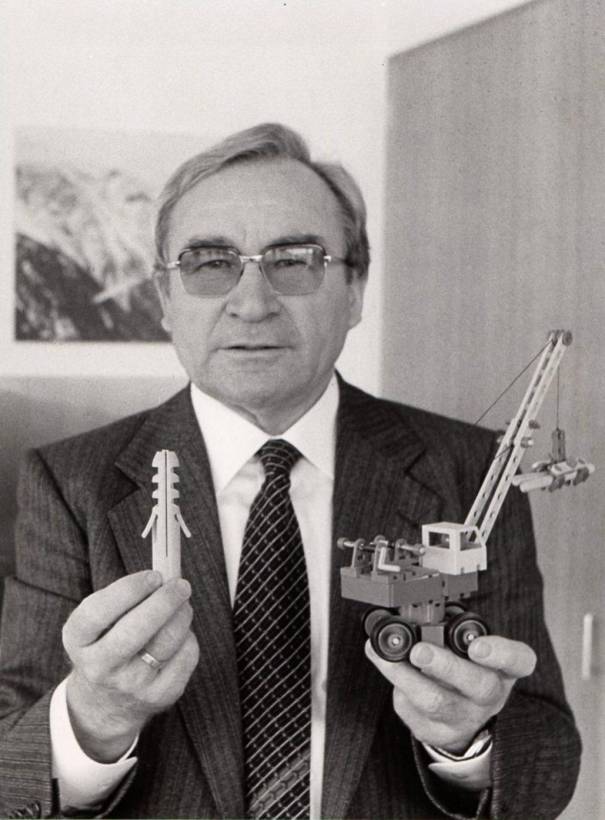
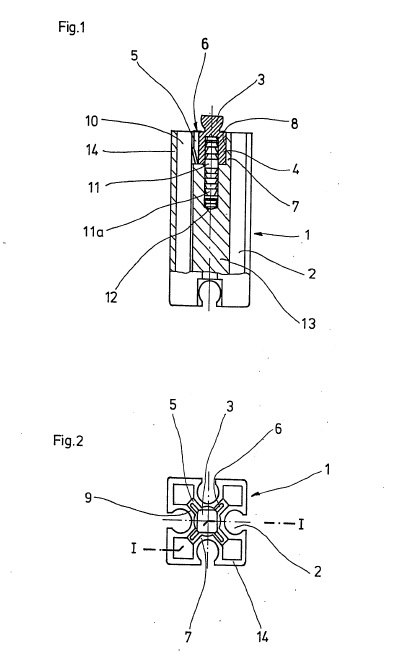
Page from invention patent
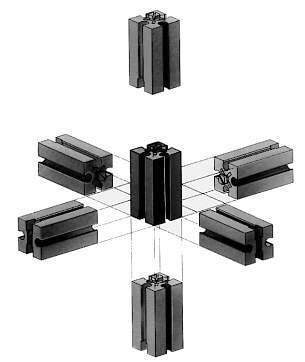




Page from invention patent


A little later, Arthur invented the dowels for the treatment of bone fractures, as well as a children's biodegradable designer from potato starch .
From this constructor (fischer TiP) you can sculpt cool 3d gizmos (hand-held color 3D printer)







Level "Robotics and learning programming"
Most likely, FISCHERTECHNIK designers were the first on the market to include electronic modules for computer-based model management. The first such kit, called COMPUTING EXPERIMENTAL, went on sale in 1983 and involved connecting toy robots to Atari, Commodore, and BBCmicro computers.

Robot-turtle from the COMPUTING EXPERIMENTAL set of 1983.

Currently, the FISCHERTECHNIK Robotics designers have a toy programmable controller ROBOTICS TXT with completely adult characteristics:
Features of the ROBOTICS TXT controller:
ARM Cortex A8 main processor: two cores, 32 bits, 500 MHz
Peripheral processor: Cortex M3
Memory: 128 MB DDR3 RAM, 64 MB FLASH
Display: 2.4-inch color touch screen (320x240 pixels)
External memory: MicroSD flash memory card
Universal inputs: 8 pieces digital / analog 0-9V or 0-5 kOhm
Counting inputs: 4 pieces (Fin <1 kHz)
Combined wireless module Bluetoot / WiFi: BT 2.1 EDR + 4.0, WLAN 802.11 b / g / n
IR photodetector for remote control kit “Remote control kit”
USB mini-USB connector for connecting to a PC
USB USB-A connector with host controller function for connecting USB cameras, USB flash drives and other devices.
Connecting the camcorder via USB, driver for Linux OS
10-pin connector for connecting expansion modules with I2C interface
Built-in speaker
Built-in real-time clock with replaceable battery for measurements at specified intervals
Connecting to smartphones / tablets via Bluetooth or WiFi allows you to use them as a terminal for the controller.
Power supply: from the battery via standard fischertechnik 2.5 mm plugs or from a 9 V power supply through a 3.45 mm cylindrical connector.
Dimensions: 90x90x25 mm
Peripheral processor: Cortex M3
Memory: 128 MB DDR3 RAM, 64 MB FLASH
Display: 2.4-inch color touch screen (320x240 pixels)
External memory: MicroSD flash memory card
Universal inputs: 8 pieces digital / analog 0-9V or 0-5 kOhm
Counting inputs: 4 pieces (Fin <1 kHz)
Combined wireless module Bluetoot / WiFi: BT 2.1 EDR + 4.0, WLAN 802.11 b / g / n
IR photodetector for remote control kit “Remote control kit”
USB mini-USB connector for connecting to a PC
USB USB-A connector with host controller function for connecting USB cameras, USB flash drives and other devices.
Connecting the camcorder via USB, driver for Linux OS
10-pin connector for connecting expansion modules with I2C interface
Built-in speaker
Built-in real-time clock with replaceable battery for measurements at specified intervals
Connecting to smartphones / tablets via Bluetooth or WiFi allows you to use them as a terminal for the controller.
Power supply: from the battery via standard fischertechnik 2.5 mm plugs or from a 9 V power supply through a 3.45 mm cylindrical connector.
Dimensions: 90x90x25 mm
The controller is used to control the models of mechanisms, machines and robots that you assemble from the designer. In order for your system to come to life, you need to develop a control program and load it into the controller. You can use the ROBO Pro programming language for this.
In ROBO Pro, programs are compiled in the form of classic flowcharts, which are a graphical display (or diagram) showing the sequence of basic steps of the algorithm.
Adult uncles use flowcharts to plan program development and properly organize its steps. Here's what the flowchart for controlling a traffic light looks like:

Flowchart in ROBO Pro
Each figure in this flowchart displays a separate stage of actions: ovals with green and red men correspond to the beginning and end of the chain of actions. The arrows show the sequence of actions.
Usually, after the flowchart is developed, we actually have a plan for compiling a program in an algorithmic programming language. In addition, each block turns into one or more of its operators. In ROBO Pro, the process of converting a circuit into a program code occurs automatically after clicking on the "Run program" button. Thus, we can debug the algorithm on real hardware without manually coding the program.
Drawing up flowcharts is very useful at first when studying programming, as it allows you to develop the habit of drawing up a logical and, moreover, a complete plan of the program being created.
The figures used in ROBO Pro to represent program elements to some extent repeat the elements listed in GOST 19.701-90 .
The advantage over LEGO is that LEGO has its own “closed” programming language, which is used only in lego. At FISCHERTECHNIK, the language is based on the same principles as the "adult" programming languages. Children get acquainted with the generally accepted form of recording algorithms and block diagrams.
Wi-Fi Control:

ROBOTICS TXT Discoverer Set / Learning Lab. Workbook in Russian PDF

Robot-footballer

Robot reconnaissance and tracker robot

PTZ camera and video

operator Hand dryer with line crossing sensor and traffic light

ROBO TX Researcher: tunnel robot, flower detector, ranger, lifeguard, etc.
Workbook in Russian PDF

ROBO TX ElectroPneumatics: pinball, color sorter robot, track for a ball with a gripper and a vacuum manipulator
Workbook in Russian PDF

Realistic fully functional industrial robots: a robot for a warehouse, a three-axis manipulator and a robot with a gripper
Theory from a workbook :

Workbook in Russian PDF
Industrial Robot Video
Pro Level
Set "Ecological energy"

Ecological energy: wind power installation, tracking the sun, electric car, hydrogen fuel cell
Video
Rotary solar battery, but with an additional set:
Rotary solar battery, but with an additional set:
Theory from a workbook:

Workbook in Russian PDF
Set "Technical Revolution"
11 interesting models that repeat various outstanding inventions of the 17-19th centuries.

Technical revolutions: the “perpetual motion machine”, a helicopter, an electric motor and an electric generator, a wiper for a car (used to be wiped with hands), a centrifugal regulator (the first cybernetic device), a Morse telegraph, etc.
An example of a description from a workbook:

Workbook in Russian PDF
Set "Leonardo Da Vinci Machines"
From the designer you can assemble the mechanisms that Leonardo da Vinci invented: blacksmith pliers, catapult, mechanical drum, grab, ratchet mechanism, wings, a sliding bridge, and a file cutting machine: A

sliding bridge and a war chariot
Theory from a workbook:

Workbook in Russian Pdf
Dynamics / Dynamics XL Set
With this kit, you can study physical phenomena such as inertia, acceleration, energy conservation, momentum, and other topics.

Theory from a workbook:

Workbook in Russian PDF
Video
Set "Electronics" / "Electrical Engineering"
Set for experiments with electronic and automatic devices. With this designer, engineers will be able to get acquainted with the basics of electronics and learn: simple electrical circuits, parallel and series connection of elements, circuits with transistors, capacitors, resistors and LEDs.

Carousel with touch switch and sliding door
Theory from a workbook

Workbook in Russian PDF
Conclusion

If you have a growing geek who can independently or with your help deal with the designer - take the boxed option. There are many manuals and videos in Russian. In the next publication, I will share where and how training courses for younglings are held in Moscow, as well as recommendations on how to organize a circle yourself.
PS
Hardcore video with mega crafts FISCHERTECHNIK
Almost 3D printer:
STEM:
Production Modeling:
Almost 3D printer:
STEM:
Production Modeling:
